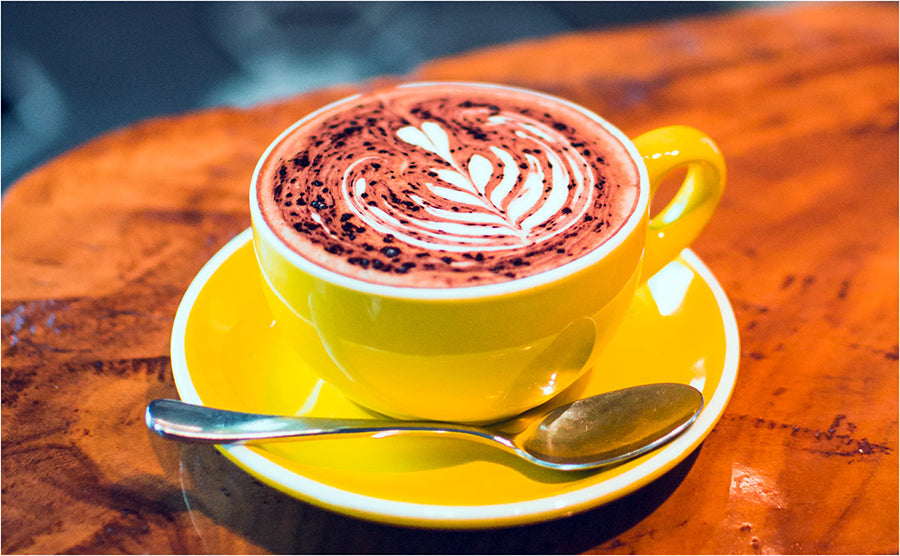Why the Third Wave Coffee Movement Stalled & How to Kick-start It Again
Canada’s third wave coffee movement, with quality, freshness and elevated customer experience as its hallmarks, began during the late 1990s and reached a feverish pitch in 2004 when Starbucks stopped using traditional, hand-operated, manual machines and switched to push button, super-automatic machines.
“There was a tangible taste difference when Starbucks switched those machines. The quality dropped,” recalls Les Kuan, instructor at the Canadian Barista Institute and long-time coffee enthusiast.
To answer the desire coffee enthusiasts had for quality, fresh coffee and a better customer experience many of the people who had worked as baristas at Starbucks decided to open their own cafes.
“It was a very low cost to entry,” remembers Matthew Lee, instructor at the Canadian Barista Institute and former barista and owner of Manic Coffee in Toronto. “You could start a café for $40,000 to $50,000. So many people just jumped into it and because there were very few third wave cafes in the marketplace you had a lot of volume, a lot of growth very quickly.”
“At the peak of the third wave coffee movement every food writer, stock analyst and restaurant industry person knew the term and understood what it meant,” states Les Kuan, “but in a relatively short amount of time the term fell out of usage. Now if you were to mention to the consumer, ‘third wave’, they’d reply, ‘third what’?
So, what happened? What happened to all of the momentum the third wave coffee movement had behind it?
“Third wave’s biggest enemy was itself,” says Les Kuan.
There were, and still are, a number of reasons why.
Café owners were inexperienced at running a business
One of the reasons why the third wave coffee movement stalled was bad business management.
“For a lot of these entrepreneurs, being a barista was their only previous job experience. As a result, they had limited exposure to normal business practices,” says Les Kuan.
In many ways the third wave coffee movement mirrors the arrival of the craft beer movement, except the craft beer movement is now firmly entrenched in the marketplace. Les Kuan has a theory on why.
“In general, it’s about the age and the financial position of the people running the breweries vs. the ones who started up coffee shops. Craft brewers were generally older, more financed, and their experience was broader having previously worked in more traditional, typical workplaces. Learning your business knowledge through a third wave coffee shop can be dangerous.”
Café owners were unable to work together
Another factor that contributed to why craft breweries were able to transition from being a start-up movement to an established industry is that the owners of the breweries were willing to work together. In fact, still today the collaborative spirit is so strong that it is not uncommon for the owner of one craft brewery to promote and recommend the brands of another craft brewery.
This was not the case with the third wave coffee movement.
“With the third wave coffee movement competitors failed to learn how to work together,” recalls Les Kuan. "A lot of the entrepreneurs were really young. They didn’t understand that your arch rival could help you. They were afraid to mingle with people in case they were able to figure out all of their secrets, their recipes so to speak".
Mathew Lee provides an excellent example of this discord.
“In Toronto, the coffee shops tried to start what was called a ‘Disloyalty Club’. The idea was to encourage your customers to try other like-minded coffee shops. Café owners tried to do it one summer and it imploded. Some coffee shops began fighting with each other; you slander us so we’re going to slander you, etc.”
Lack of a strong association
The momentum of the third wave coffee movement led to the creation of Speciality Coffee Associations throughout the world.
The purpose of these Speciality Coffee Associations was to promote the third wave coffee movement, but many involved in the industry felt there was a possible conflict of interest in play.
Some Associations took membership and sponsorship money from corporate coffee chains that didn’t always use ‘specialty grade coffee’,” recalls Les Kuan. “A lot of these companies were using commodity grade coffee, yet calling themselves specialty coffee purveyors simply because they served lattes and cappuccinos. This led to more confusion around what the definition of ‘specialty coffee’ truly was.
“You would go to a coffee show hosted by various Specialty Coffee Associations and you would see a huge banner across the front of the building saying that the event was sponsored by a non-specialty coffee company ,” says Jamie van Dam, instructor from the Canadian Barista Institute.
“Third wave café owners had this false idea that large corporate coffee companies were spurring forward the movement of artisan coffee,” says Les Kuan. “But in reality they were controlling it, not supporting it. They weren’t trying to make the third wave coffee movement expand, they were protecting the status quo.”
The birth of the fourth wave coffee snob
The early days of the third wave coffee movement were successful ones because third wave cafes were dedicated to brewing quality, fresh coffee and providing a customer experience that was a combination of education, hospitality and speed.
But somewhere along the way the third wave coffee movement mutated into what is referred to as the fourth wave coffee movement, a movement where the focus is clearly on the coffee and not the customer experience.
“The fourth wave side tracked the momentum of the third wave,” says Les Kuan. “The person running the café had this notion that they had to look cool, be rude and their service was supposed to be slow. Once I actually had a barista look me right in the eye and say, ‘people will wait for good coffee’. That’s what fourth wave shops thought a true artisan café was supposed to be.”
One could argue that pretentious café owners were more concerned with pleasing their peer group than their customers.
“To put it in perspective, it’s as simple as cup sizes,” explains Les Kuan. “Somehow it was not cool if you served a coffee bigger than 6 oz. If you ordered a large coffee--one bigger than the size of your hand-- they looked at you like you were an idiot. So what that did is send a lot of customers running back to Starbucks, especially in small town Saskatchewan. We had people who tried to open up fourth wave artisan shops there, basically coffee snob shops, and they got run out of town. People would walk in for a new, positive coffee experience and instead got lectured and, in some cases, belittled.”
How to get the Third Wave Coffee Movement back on track
So is the third wave coffee movement even still happening?
“It is. It’s still rising,” confirms Les Kuan, “but the rate of the rise has slowed. The premise is still there but the execution leaves much to be desired. As Matthew said, it’s more than just the coffee, it’s the entire experience. In concentrating so much on the coffee aspect of it many cafes have totally forgotten the customer experience side.”
One customer experience area that needs to see a dramatic improvement is the speed of service.
“Speed is definitely the tell-tale thing,” says Les Kuan. “Basically all of your artisan coffee shops compared to our previous standards are way slower.”
“I’ll go into a café now and it’s impossible to see anyone make four coffees within five minutes,” points out Matthew Lee.
Operating at a slower pace turns off customers.
“It doesn’t matter if you're a second wave, third wave or fourth wave coffee shop; the customer that hasn’t got his coffee yet is the most impatient (important) person on the planet. That’s why, as much as a lot of café owners want to turn coffee into a slow movement thing, it just gets no traction.”
That’s not the only way slow service is costly.
“A café’s service has to be fast and efficient because the bottom line is if you are not moving enough people through your lineup in an hour your labour costs are higher, if not double in some instances” say Les Kuan.
Teaching the right way to be a successful third wave café
“Our argument is there are a lot of coffee drinkers that want a better experience than what they are currently paying for, but they don’t want to compromise the customer service and they don’t want to feel awkward or like an idiot when they try to order, otherwise they’re not going to come back,” states Les Kuan.
In other words, in order to have a successful third wave café, owners must be proficient at more than great coffee. Here are three business objectives that must be met:
-
Speed & Efficiency
“There is no room for prima donnas. You don’t have to be slow to have good, quality coffee,” says Les Kuan. “The technique that we teach is based on speed and efficiency. It’s like a kitchen at a fine French restaurant; at the heart of it they realize that speed and efficiency are just as important as the taste of the food.”
-
Business Operation Best Practices
When the third wave coffee movement was in its heyday back in 2004-2010, mentoring played an important role in passing along the tenants of what the movement was all about to the next group of baristas and café owners. Mathew Lee’s café, Manic Coffee, was one of those incubation chambers.
“Matt and Manic Coffee basically bred a lot of your third and fourth wave entrepreneurs,” says Les Kuan.
“I’ve had six of my staff open their own cafes and they’re still doing well,” Matthew Lee says proudly.
But now, with more and more cafes focusing on the coffee and ignoring the customer experience side of the business, apprenticing in a café before opening your own shop isn’t necessarily a smart thing.
“We used to say go work in a third wave shop but now the problem is if people do, they pick up the bad habits, the bad business practices,” says Les Kuan. “I actually think it’s a great idea to work at Starbucks instead because then people will learn efficiencies, systems, business best practices and train their palate not to accept bitter as the predominant coffee flavour.”
-
Superior Customer Experience
To develop a true appreciation for what exceptional customer service looks like and how it can have a positive impact on your business, we encourage you to look outside the café industry for inspiration.
“If you want to know what the gold standard for customer experience is, get a job at a Fairmont Hotel,” says Jamie van Dam.
“Fairmont truly understands what it’s like to craft top-end customer experiences for their guests,” concurs Les Kuan. “When we led a barista training course in Banff every employee we interacted with was attentive, gracious, courteous, informative, educational and non-judgemental.”
So, is it possible to have a successful third wave coffee shop and help kick-start the movement again? The answer is, “yes”. Just follow this reliable formula:
- Get the training and develop the skill set necessary to deliver 12 espresso-based drinks in 15 minutes time.
- Take our business course to fully immerse yourself in best business practises for a 3rd wave cafe. If you are still unsure, then apprentice at a Starbucks to learn business best practices that will allow you to run a sound operation.
- Work at a great service oriented business like Fairmont Hotels so you can learn firsthand what type of culture it takes to deliver a gold standard customer experience.
“Combine all this, with high-quality, specialty-grade 3rd wave coffee that actually tastes good and I don’t see how the model can go wrong,” says Les Kuan.
“You will have all the makings of a vibrant third wave café,” says Jamie van Dam.



